The African House Gecko, Hemidactylus mabouia, is a fascinating reptile with a wide global range, and in this article, we will unravel the mystery of its natural habitat and distribution.
- The African House Gecko, Hemidactylus mabouia, can be found in various parts of the world, including Africa, Central and West Africa, and the Americas.
- It originated in southeastern Africa, specifically in areas like Zimbabwe and Mozambique.
- The gecko’s presence in the Americas is believed to be a result of its transportation through the trans-Atlantic slave trade.
- The African House Gecko is highly adaptable and can thrive in different environments, including human-populated areas.
- It benefits from its commensal relationship with humans.
African House Gecko Distribution and Origin
The African House Gecko, Hemidactylus mabouia, has a diverse distribution that spans multiple continents, and understanding its origins is key to unraveling its global presence. This gecko species is native to southeastern Africa, specifically in regions such as Zimbabwe and Mozambique. Over time, it has managed to establish populations in various parts of the world, including Africa, Central and West Africa, as well as the Americas.
Research suggests that the African House Gecko’s presence in the Americas is linked to the trans-Atlantic slave trade. During this time, geckos of this species are believed to have stowed away on ships, making them unintentional passengers on the long voyages. Their ability to survive for extended periods without much food or water made them excellent stowaways. Today, only one lineage of the African House Gecko, H. mabouia sensu stricto, has successfully colonized the Americas and thrived.
This gecko species is highly adaptable, able to thrive in various environments. It is often found in open spaces, including human-populated areas. Its commensal relationship with humans provides it with a source of food and shelter, contributing to its widespread presence. The African House Gecko has proven to be a resilient species, capable of adapting to different geographic regions and taking advantage of the opportunities presented by human proximity.
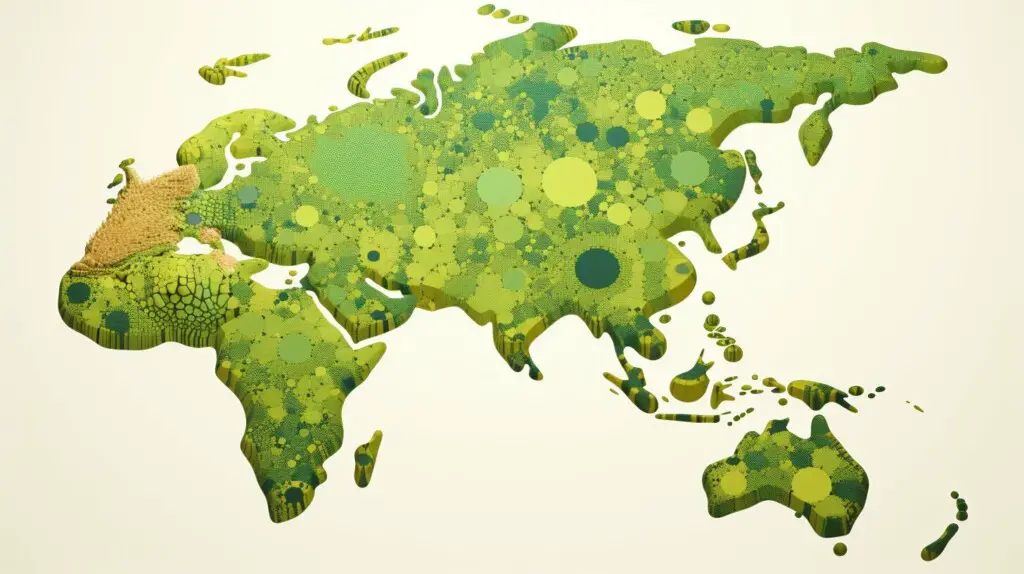
As shown in the distribution map above, the African House Gecko can be found in multiple locations across the world. Its global range extends from its native regions in southeastern Africa to various parts of the Americas. This distribution highlights the gecko’s remarkable ability to adapt and survive in diverse habitats. The African House Gecko’s journey from its origins to its widespread presence is a testament to its resilience and adaptability.
| Continents | Native Regions | Presence |
|---|---|---|
| Africa | Southeastern Africa | Widespread |
| Central and West Africa | N/A | Present |
| Americas | Stowaway through trans-Atlantic slave trade | Colonized and Flourished |
African House Gecko in Africa
Africa is the native land of the African House Gecko, and its presence can be observed across various regions of this vast continent. The gecko is known to inhabit countries such as Nigeria, Cameroon, Ghana, and Angola. It thrives in the warm and tropical climate, making it well-suited for the diverse habitats found in Africa.
One of the key regions where the African House Gecko is found is the Sahel, a transitional zone between the Sahara Desert and the Sudanian Savanna. This region provides a favorable habitat for the gecko, with its arid and semi-arid conditions. The gecko’s ability to withstand high temperatures and scarce water sources allows it to thrive in these challenging environments.
Another notable habitat for the African House Gecko in Africa is the coastal regions, including the countries on the western coast of the continent. The gecko can be found in urban areas, rural villages, and even on the outskirts of cities. Its adaptability to human-populated environments has contributed to its widespread distribution in Africa.
Native Regions of the African House Gecko in Africa:
- Sahel region
- Coastal regions
- Urban areas
- Rural villages
The African House Gecko’s presence in Africa highlights its ability to adapt and thrive in different habitats. Its widespread distribution across the continent underscores its resilience and successful colonization in diverse environments. As we explore the gecko’s global range, it becomes evident that Africa plays a crucial role in sustaining the population of this fascinating species.

| Native Regions | Primary Habitat | Distribution |
|---|---|---|
| Sahel region | Arid and semi-arid zones | Nigeria, Cameroon, Chad, Sudan |
| Coastal regions | Urban and rural areas | Ghana, Angola, Senegal, Ivory Coast |
African House Gecko in the Americas
The African House Gecko found its way to the Americas, where it established itself successfully in specific regions, marking its worldwide presence. This gecko species is believed to have arrived in the Americas through the trans-Atlantic slave trade, during which it likely stowed away on ships traveling from Africa. The geckos’ ability to survive for extended periods without much food or water made them ideal stowaways.
Only one lineage of the African House Gecko, scientifically known as Hemidactylus mabouia sensu stricto, managed to colonize the Americas and thrive. This lineage likely originated in southeastern Africa, particularly in countries like Zimbabwe and Mozambique. Upon reaching the Americas, these geckos spread and settled in specific regions.
The adaptability of the African House Gecko to different environments plays a significant role in its successful establishment in the Americas. It is commonly found in open spaces, including human-populated areas. This gecko species benefits from its proximity to humans and has developed a commensal relationship with them. It takes advantage of the abundance of food sources and shelter that human settlements provide.
In summary, the African House Gecko’s presence in the Americas is attributed to its transportation through the trans-Atlantic slave trade. The geckos successfully established themselves in specific regions, adapting to new environments and forming a commensal bond with humans. This widespread distribution of the African House Gecko highlights its ability to thrive in diverse habitats, ultimately contributing to its global range.
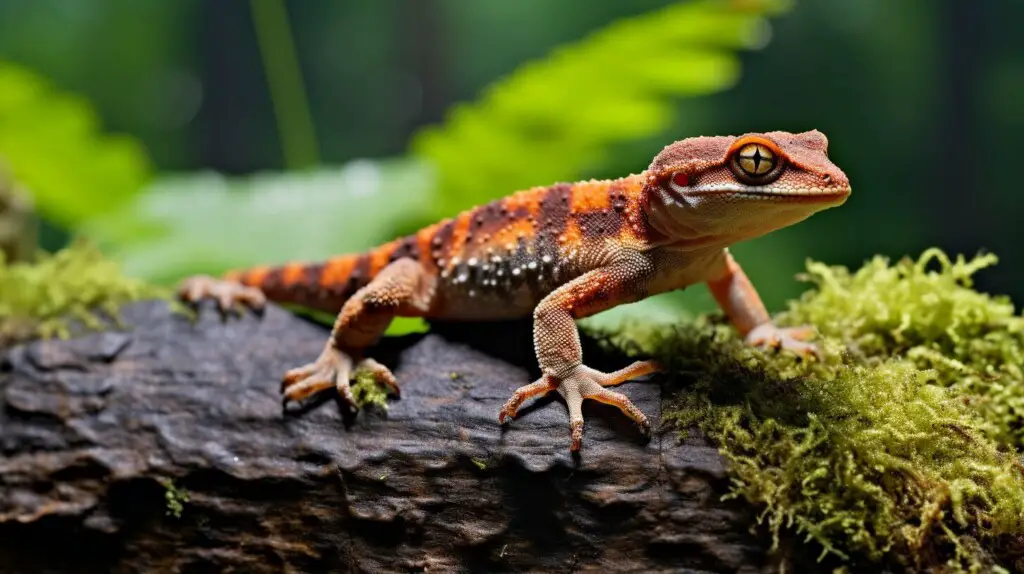
| Region | Distribution |
|---|---|
| Florida, USA | Widespread |
| Hawaii, USA | Introduced |
| Caribbean Islands | Widespread |
| Central America | Widespread |
| South America | Widespread |
The Trans-Atlantic Slave Trade and Gecko Transportation
Research suggests a fascinating link between the trans-Atlantic slave trade and the transportation of African House Geckos to the Americas, offering insight into their worldwide presence. It is believed that these geckos inadvertently traveled on ships during the slave trade, making them accidental passengers on the long and treacherous journey from Africa to the Americas. This transportation provided the geckos with an opportunity to establish themselves in new regions and thrive in their new environments.
The African House Gecko’s ability to survive for extended periods without much food or water made them ideal stowaways on ships. Their resilience allowed them to endure the hardships of the voyage, which often included long periods of time in cramped and unfavorable conditions. The geckos’ remarkable adaptability and ability to thrive in different climates further enabled their successful colonization in the Americas.
Only one lineage of the African House Gecko, known as H. mabouia sensu stricto, managed to establish a thriving population in the Americas. This lineage, believed to have originated from southeastern Africa, specifically areas like Zimbabwe and Mozambique, gained a foothold in regions such as the Caribbean and parts of South America. Their presence in these areas serves as a testament to their resilience and ability to adapt to new environments.
“The transportation of African House Geckos through the trans-Atlantic slave trade played a significant role in their worldwide presence, demonstrating the unexpected consequences of historical events on ecological distributions.”
The African House Gecko’s transportation through the trans-Atlantic slave trade not only had ecological implications but also serves as a reminder of the complex connections between historical events and the natural world. This unintentional journey across the ocean not only led to the gecko’s successful establishment in the Americas but also offers valuable insights into their global distribution and presence today.
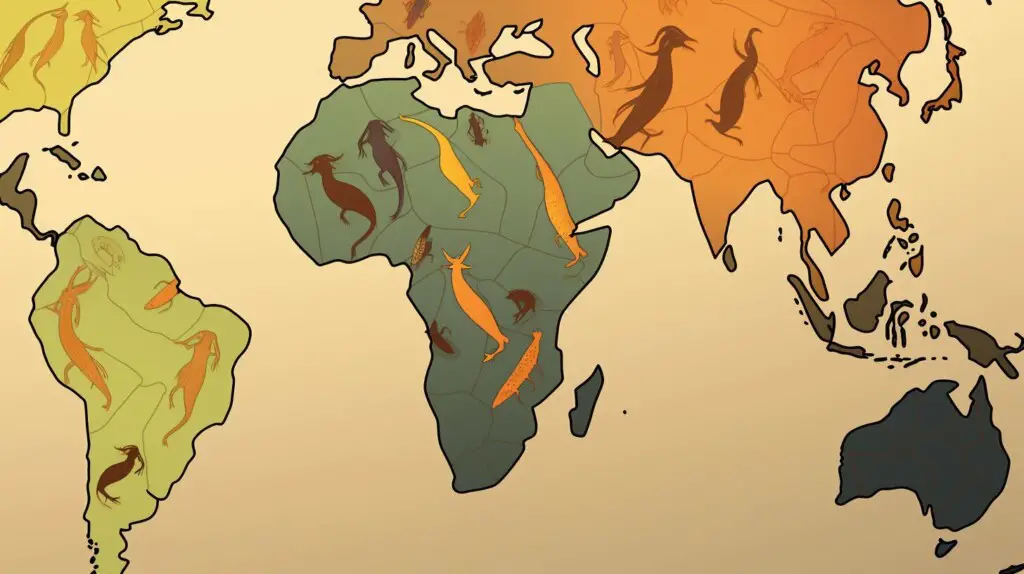
The African House Gecko’s adaptability plays a crucial role in its ability to survive and thrive in diverse habitats across its native regions. This gecko species, scientifically known as Hemidactylus mabouia, hails from southeastern Africa, with its origins traced back to countries like Zimbabwe and Mozambique. It is a versatile reptile that has managed to expand its range beyond Africa, reaching Central and West Africa as well as the Americas.
Recent research suggests that the African House Gecko made its way to the Americas through the trans-Atlantic slave trade. These geckos were inadvertent stowaways, hitching rides on ships during the slave trade era. They proved to be excellent travelers, thanks to their ability to survive for long periods of time without significant food or water. While multiple lineages of the African House Gecko were transported, only one lineage, H. mabouia sensu stricto, successfully colonized the Americas and thrived.
A remarkable aspect of the African House Gecko’s adaptability is its ability to acclimate to different environments. It is commonly found in open spaces, including human-populated areas such as homes, barns, and buildings. This gecko’s commensal relationship with humans is mutually beneficial, as it feeds on insects and pests, providing natural pest control.
Overall, the African House Gecko’s presence in the Americas is believed to be a result of its accidental transportation through the trans-Atlantic slave trade. Its adaptability allows it to survive and flourish in diverse habitats, making it an impressive and resilient reptile.
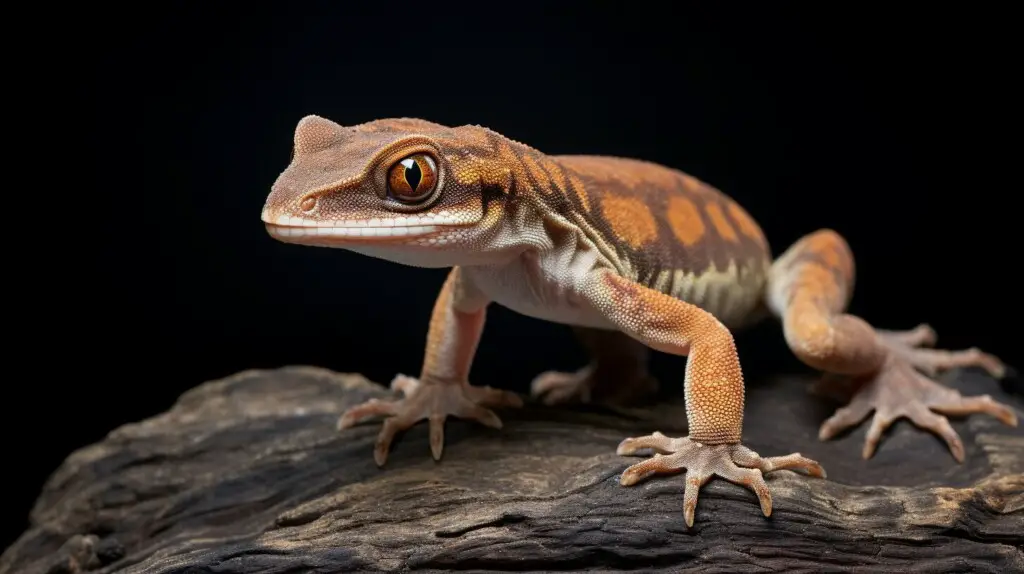
| African House Gecko Adaptability | Geographic Range | Native Regions |
|---|---|---|
| High | Africa, Central and West Africa, Americas | Southeastern Africa (Zimbabwe, Mozambique) |
| Behavioral Characteristics | Open spaces, human-populated areas | N/A |
| Significance | Trans-Atlantic slave trade and accidental transportation | N/A |
Key Takeaways:
- The adaptability of the African House Gecko allows it to survive and thrive in diverse habitats.
- It originated in southeastern Africa, specifically in countries like Zimbabwe and Mozambique.
- The gecko’s presence in the Americas can be traced back to the trans-Atlantic slave trade, where it stowed away on ships.
- The African House Gecko is often found in open spaces and human-populated areas, benefitting from its commensal relationship with humans.
The Gecko’s Habitat Preferences
The African House Gecko demonstrates a preference for certain habitats, and understanding its natural habitat is key to locating this intriguing reptile. This adaptable species can be found in a variety of environments, from urban areas to rural landscapes. It has a remarkable ability to thrive in different geographic locations, making it a successful colonizer in both Africa and the Americas.
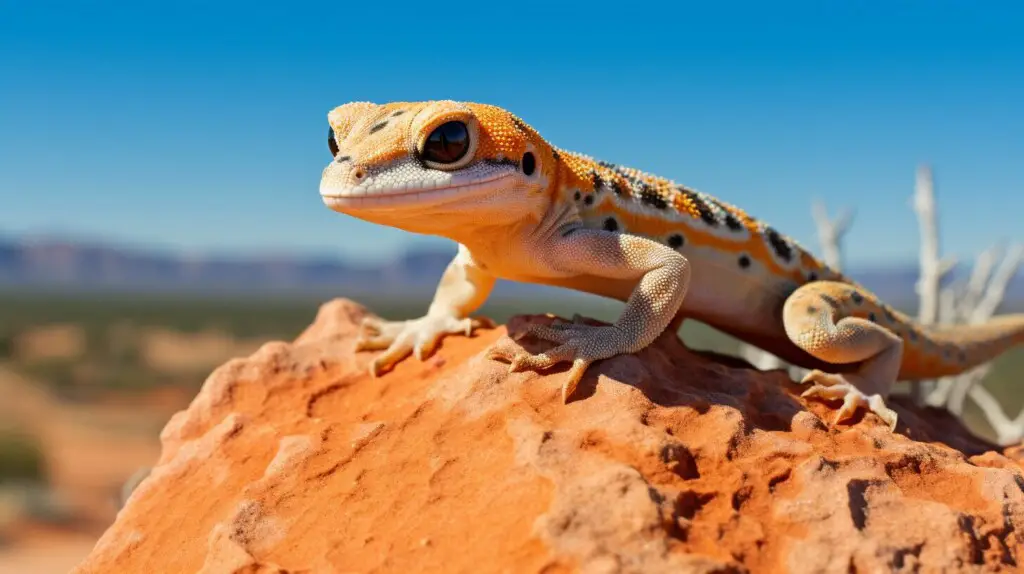
In Africa, the African House Gecko is commonly found in regions with warm climates and abundant vegetation. It can be spotted in forests, grasslands, and coastal areas. This gecko is known for its climbing abilities and often takes up residence in trees, where it can easily access its preferred diet of insects and small invertebrates.
Similarly, in the Americas, the African House Gecko has adapted to a variety of habitats. It is often found in tropical and subtropical regions, where it takes advantage of the warm climate and ample food sources. This species has a fondness for human-populated areas and can frequently be found near buildings, clinging to walls and ceilings.
Gecko’s Habitat Preferences in Summary:
- The African House Gecko thrives in a range of environments, from urban to rural.
- It prefers warm climates and can be found in forests, grasslands, and coastal areas.
- This adaptable gecko is skilled at climbing and often inhabits trees and human-populated areas.
- It feeds on insects and small invertebrates, which are abundant in its preferred habitats.
Understanding the African House Gecko’s habitat preferences is crucial when trying to locate this fascinating reptile. Whether exploring the African continent or the Americas, keeping an eye on suitable environments and taking note of its natural habits can increase the chances of spotting this elusive creature.
| Region | Preferred Habitat |
|---|---|
| Africa | Forests, grasslands, coastal areas |
| Americas | Human-populated areas, tropical and subtropical regions |
Human-Proximity and Commensalism
A unique characteristic of the African House Gecko is its affinity for human-populated areas, where it thrives due to its commensalism with humans. This gecko species has adapted to coexist with humans, taking advantage of the shelter and abundant food sources provided by human settlements. It is commonly found in residential areas, including houses, gardens, and urban landscapes.
One of the reasons for the African House Gecko’s success in human-populated areas is its ability to climb vertical surfaces, allowing it to explore and inhabit various parts of buildings. It can easily access high places such as ceilings, walls, and even outdoor light fixtures, where it can find insects attracted to artificial light sources.
The gecko’s diet primarily consists of insects such as ants, moths, and cockroaches, which are commonly found in human environments. This diet, combined with its adaptability to different climates, makes it well-suited to survive in urban and suburban areas across its range.

Despite its close association with human settlements, the African House Gecko remains primarily nocturnal, hiding during the day in crevices and spaces between objects. It is often observed on walls or ceilings at night, where it waits patiently for prey to come within reach.
In conclusion, the African House Gecko’s ability to thrive in human-populated areas showcases its remarkable adaptability and its reliance on commensalism with humans. This gecko species has found a niche in urban environments, taking advantage of the resources and shelter provided by human settlements. Its presence in such areas is a testament to its successful colonization and ability to adapt to a variety of habitats.
African House Gecko Distribution Map
Visualizing the distribution of the African House Gecko through a distribution map helps to comprehend the extensive areas it inhabits. This gecko species, scientifically known as Hemidactylus mabouia, can be found in different parts of the world, including Africa, Central and West Africa, and the Americas. It is native to southeastern Africa, with origins in countries like Zimbabwe and Mozambique.
Recent research suggests that the African House Gecko made its way to the Americas through the trans-Atlantic slave trade. During this period, the geckos unintentionally stowed away on ships, making them unintentional passengers that were able to survive long journeys without much food or water. It is worth noting that only one lineage of the African House Gecko, H. mabouia sensu stricto, successfully established itself and thrived in the Americas.
This gecko species is highly adaptable, enabling it to thrive in various environments. It is commonly found in open spaces, including human-populated areas. The African House Gecko benefits from its proximity to humans and exhibits a commensal relationship with them. This means that it benefits from human presence while not causing harm or providing any direct benefit to humans in return.
To gain a better understanding of the distribution of the African House Gecko, please refer to the distribution map below:
| Region | Description |
|---|---|
| Africa | The African House Gecko is widely distributed across various countries in Africa, including Zimbabwe, Mozambique, and other parts of Central and West Africa. |
| Americas | The gecko’s presence in the Americas is a result of its transportation through the trans-Atlantic slave trade. It successfully colonized the region and can now be found in countries like Brazil, the United States, and other parts of Central and South America. |
| Human-Populated Areas | One distinct characteristic of the African House Gecko is its affinity for human-populated areas. It can often be found in urban and suburban environments, making use of buildings and structures for shelter. |
Visualizing the African House Gecko’s distribution through a map provides valuable insights into its global range, highlighting areas where it has established a presence. This information helps researchers and enthusiasts alike in understanding the geographic scope of this remarkable reptile.
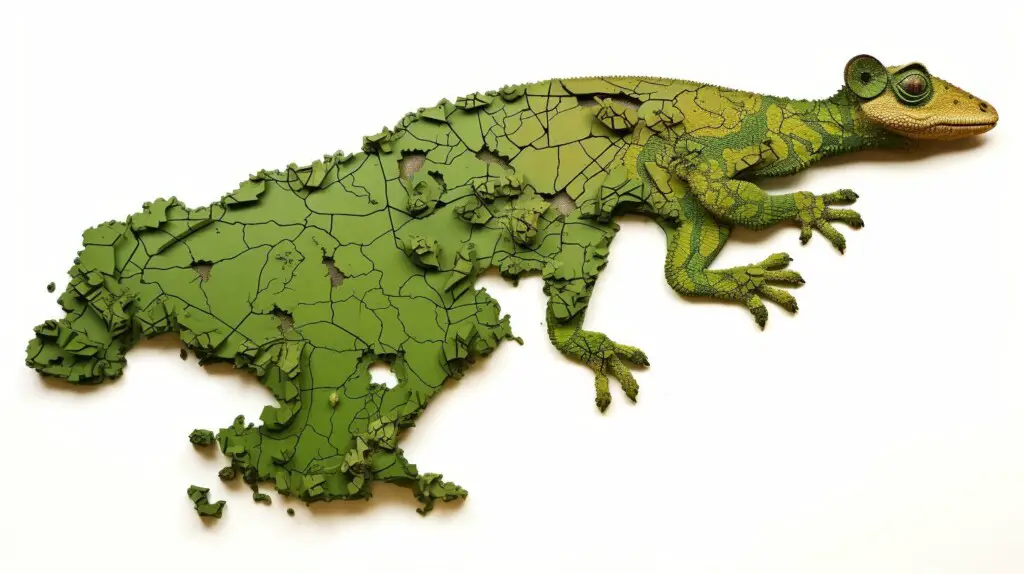
From Africa to the Americas, the African House Gecko boasts a global range that stretches across continents, making it a truly remarkable creature. This gecko, scientifically known as Hemidactylus mabouia, can be found in various regions, including Africa, Central and West Africa, and the Americas. It originated in southeastern Africa, specifically in areas like Zimbabwe and Mozambique. Recent research suggests that the gecko spread to the Americas through the trans-Atlantic slave trade, where it found a new home and thrived.
H. mabouia is believed to have stowed away on ships during the slave trade, making them excellent stowaways due to their ability to survive for long periods of time without much food or water. Only one lineage of the African House Gecko, H. mabouia sensu stricto, successfully colonized the Americas and flourished. This successful colonization is thought to be a result of the geckos’ transportation through the slave trade.
The African House Gecko’s adaptability is a key factor in its global range. It is able to thrive in different environments and habitats, making it a versatile species. The gecko is often found in open spaces, including human-populated areas, where it benefits from its commensal relationship with humans. This close proximity allows the gecko to take advantage of the warmth and shelter provided by human structures, such as houses and buildings.
To visualize the distribution of the African House Gecko, refer to the distribution map below:
| Region | African House Gecko Presence |
|---|---|
| Africa | Widespread |
| Central and West Africa | Abundant |
| Americas | Colonized |
The map highlights the widespread presence of the African House Gecko in Africa, particularly in Central and West Africa, as well as its successful colonization in the Americas. This global range further emphasizes the adaptability and resilience of this fascinating reptile.
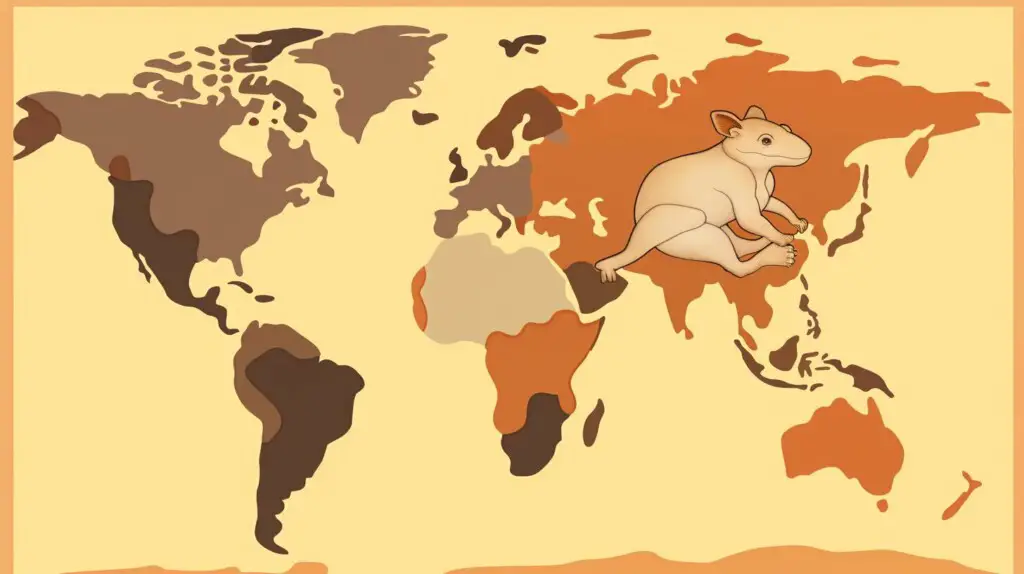
Conclusion
The African House Gecko’s presence in various parts of the world showcases its adaptability and highlights the intriguing journey it took to reach the Americas. This fascinating reptile, scientifically known as Hemidactylus mabouia, originates from southeastern Africa, specifically areas like Zimbabwe and Mozambique. It has successfully spread to other regions, including Central and West Africa, as well as the Americas. Research suggests that the gecko was transported to the Americas during the trans-Atlantic slave trade, likely unintentionally stowing away on ships.
Being excellent stowaways due to their ability to survive for long periods without much food or water, only one lineage of the African House Gecko, H. mabouia sensu stricto, managed to colonize the Americas and thrive. This adaptability is a testament to the gecko’s resilience and ability to thrive in different environments.
The African House Gecko can be found in open spaces, including human-populated areas, thanks to its commensal relationship with humans. This means that it benefits from its proximity to people, making it a common sight in urban areas. Its presence in the Americas is thought to be a direct result of its transportation during the slave trade, highlighting the far-reaching impacts of this historical event.
In conclusion, the African House Gecko’s distribution and habitat worldwide paint a picture of a resilient and adaptable species that has journeyed far from its native African regions to establish a presence in various parts of the world. Its ability to survive in a range of environments, including those shaped by human activities, underscores its remarkable versatility as a reptile.
FAQ
Where is the African House Gecko found in the world?
The African House Gecko is found in various parts of the world, including Africa, Central and West Africa, and the Americas.
What is the origin of the African House Gecko?
The African House Gecko originated in southeastern Africa, specifically in areas like Zimbabwe and Mozambique.
How did the African House Gecko spread to the Americas?
Recent research suggests that the African House Gecko spread to the Americas through the trans-Atlantic slave trade. It is believed that the geckos stowed away on ships during this time, making them excellent stowaways due to their ability to survive for long periods of time without much food or water.
Did all lineages of the African House Gecko successfully colonize the Americas?
No, only one lineage of the African House Gecko, H. mabouia sensu stricto, successfully colonized the Americas and flourished.
Where is the African House Gecko commonly found?
The African House Gecko is commonly found in open spaces, including human-populated areas. It is a commensal species, benefiting from its proximity to humans.
How adaptable is the African House Gecko?
The African House Gecko is highly adaptable to different environments and can thrive in various geographic locations.
What is the habitat preference of the African House Gecko?
The African House Gecko prefers habitats that include open spaces and human-populated areas.
How did the African House Gecko benefit from its proximity to humans?
The African House Gecko benefits from its commensal relationship with humans, finding shelter and food sources in human-populated areas.
Is there a distribution map available for the African House Gecko?
Yes, there is a distribution map showcasing the areas where the African House Gecko can be found.
Where can I find the African House Gecko globally?
The African House Gecko can be found in various regions around the world, indicating its global range.

